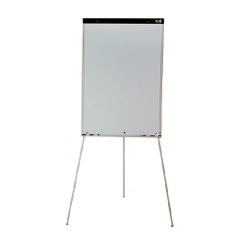People connect with stories while listening to businesses proposals and ideas. Some people are born with an innate craving for telling their story with PowerPoint slides. But, there are other ways to engage your audience when visuals are necessary. While slides are a common tool for communication in many organizations, it appears that babies, young children and smart adults are not born with a deep desire for sharing stories in bullet points.
If you are looking for a way to share your story and help customers connect at a deeper level, go beyond slides to stand out. Look for alternatives, substitutes and variety in your presentations. A carefully built story can help you and your organization pierce the competitive foam and rise to the top.
Here are a few thoughts about six options.
1. Whiteboard Sketches: Looking for the fastest way to engage an audience? Grab a marker and simplify complex data in a whiteboard presentation. Whiteboard sketches show that you are ready and willing to roll up your sleeves and communicate value.
2. Flipchart Posters: Much like whiteboard presentations, a flip chart is a perfect place to tell your story. Show important statistics. Reinforce learning points. Emphasize core issues. Record comments. Flip charts are easy to move, post and work with interactively. This is a powerful way to become a great storyteller with your customers.
3. Product Demos: Most of the advice on sales presentations includes doing a product demo. However, many sales presenters fall short in doing a good job of this. It’s too easy to get distracted in product features and forget the cardinal rule: this is the first time your customer is seeing your product. Keep things easy, simple and short. Do this, and you’ll be seen as a great storyteller and effective sales presenter.
4. Prototypes: Don’t have a finished product, software or solution? Show a prototype! People love to experience new products in a hands-on environment. Show a working model. Ask for input. Include your customers in the creation of the product they have been wishing for.
5. Storybooks: As children we all loved looking through books filled with colorful pictures and simple stories. Guess what? Adults still enjoy this format. You’d be shocked to find this method works wonders for high-tech solutions, software products and complex strategy recommendations.
6. Photo Montage: Much like a storybook, photos tell your story visually. Make a powerful emotional connection. Use photos of people, products and situations. Hint: match the photos to reflect your niche audience. Speak the language of your audience–especially when you are speaking in pictures.
These are powerful communication skills for presenting and continuing to work with your clients. In looking at these six powerful alternatives, what do you notice? You’re not limited! You can mix and match to suit specific audiences, situations and needs. Plus, you can easily flow from slides to any one of these alternatives without a hitch.
photo by Katrina Snaps
